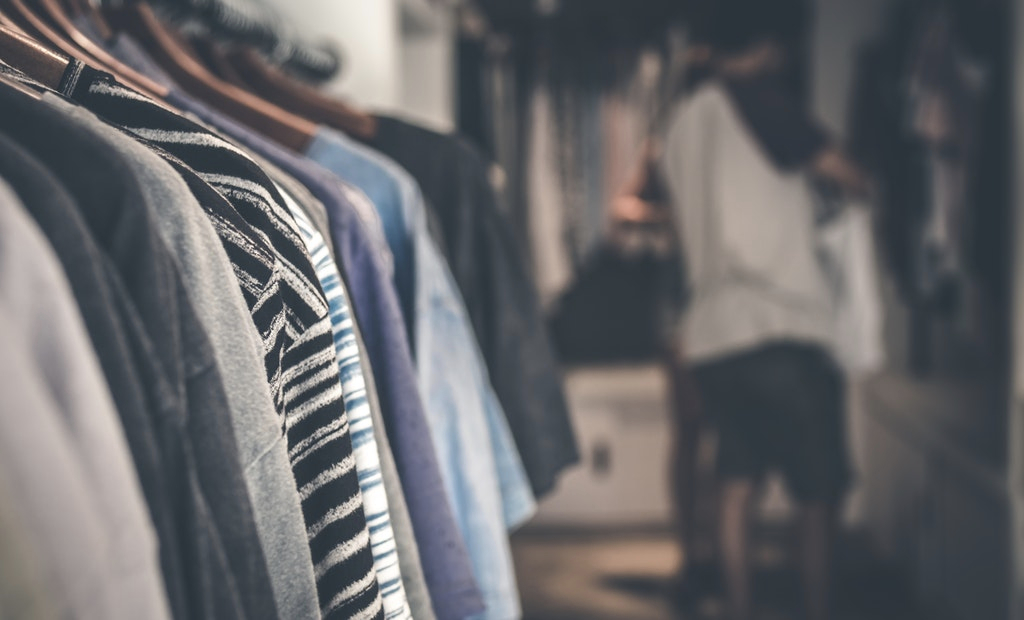The bright future of sustainable clothes

As it stands, budget clothing that is made at the expense of exploitation and unsustainable practices is the default way to purchase clothes in the UK. Major high street brands such as Topshop and Primark, which are frequented by millions without a second thought, have been proven to use 14-year-old children (and often younger) in supply factories.
On top of this, budget clothes stores have developed a mainstream throwaway culture that is highly damaging to the environment. It’s not only the materials that these companies are sourcing that are in question, but the frequency of their use. £2.50 t-shirts and £5 pyjamas in Primark, for example, are so cheap that these are annual, if not seasonal, purchases. They are arguably contributing to shopping addictions, or, at the very least, offering a great outlet to manifest such addictions. The energy, fuel and materials it takes to produce the average wardrobe in the UK is on the rise.
It’s a difficult task to alter consumer behaviour in favour of more sustainable clothing. Companies such as Moolberry’s sustainable clothing are doing a great job of enforcing a zero-waste policy environment, along with using sustainable materials at a reasonable price point. It’s possible that, along with having great style, consumers can be convinced of the importance of considering where they buy it.
Of course, when Boohoo are using British factory workers being paid £3.50 (over £5 below minimum wage), along with unsafe practises such as no masks, then it becomes impossible for companies such as Moolberry to compete on price alone. Thankfully, many customers are good at judging value, not just price. But some value is hard to see – the value of paying factory workers above minimum wage and ethical materials is hard to immediately realise in a high street shop.
It is therefore the trend towards online shopping that is helping sustainable shopping grow, as there’s more room for businesses to tell their story and their value beyond just the price tags. High street shops are inevitably falling behind on the sustainability front, with business models based on impulse buying and throwaway culture.
However, with more attention on the sustainable online brands, expectations for high street stores will slowly creep up. Online shops with sustainable USPs are becoming easier to find, and arguably the pandemic has accelerated their business models with the dependency on online shopping. With that in mind, here are a couple of ways customers can ensure their wardrobe is as sustainable as possible.
Materials
It’s important to know which materials are sustainable and which are not when buying clothes. Wool, cotton, silk and linen are fabrics most people have heard of, and they are usually fairly sustainable. When buyers come across materials they haven’t heard of, it’s possible these materials have been made synthetically in a lab using petroleum and other chemicals. Polyester and nylon, for example, fall into these categories, and they’re bad for the environment – but there are others. They pollute our water systems by shedding microfibres in the wash, and are essentially plastics.
It’s worth doing some research on the material in question because many lesser-used materials, such as hemp, are being used for sustainability purposes. At the end of the day, it’s about using natural materials that are renewable.
Appreciating what’s already in the wardrobe
This is an important point that’s often misunderstood: just because a brand has more sustainable practices than the average, it doesn’t mean that buying 60 items every season equates with saving the world. It’s important to remember that the “natural materials” mentioned above are still materials that need vast amounts of energy to be produced – machinery, transportation, water, fertiliser and many more things go into producing a single t-shirt.
What is more sustainable than buying 60 sustainable clothing items is buying nothing.
A lot of sustainability practices come from fighting the consumer urge. Appreciating one’s wardrobe as it is now is the single best way to reduce a carbon footprint. Additionally, looking for second-hand clothes in charity shops can be done before purchasing a needed item.
Quality over quantity
The term “false economy” refers to false belief that buying cheap items saves money, but in fact costs more in the long run because they need to be replaced more often. Sustainable clothing isn’t only about how it was made, but how long it lasts. Of course, this means nothing without an attitude shift towards “quality over quantity”, in which customers defer replacing clothes for longer periods and get the full life out of their clothes, instead of cutting it short. Good quality clothes can last vastly longer than budget clothes.
Recycling and charity
Another way to be more sustainable when it comes to fashion is to consider how items are disposed of. Giving to charity, a friend, or recycling means that the recipient no longer needs to purchase the clothes, so less is being produced. Again, this ties into the unfashionable idea of reducing production, supply and demand, but it’s the ugly truth. Why would more clothes need to be produced for someone who can receive second-hand, perfectly good condition clothes?
The editorial unit

























Facebook
Twitter
Instagram
YouTube
RSS